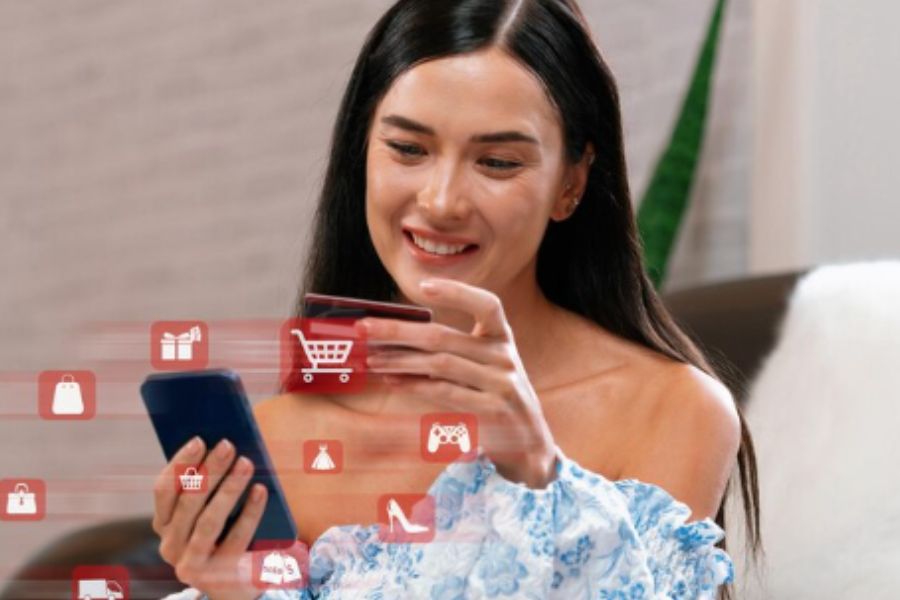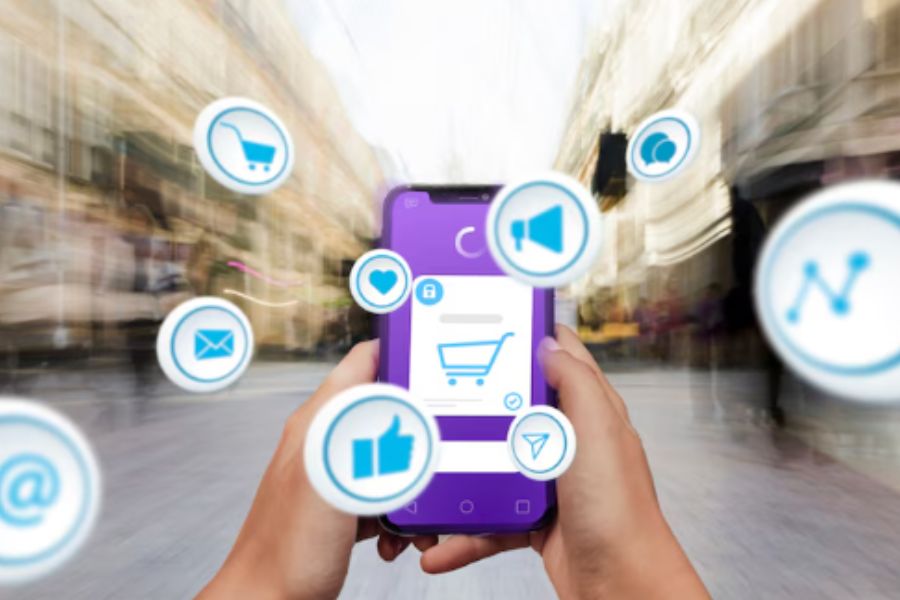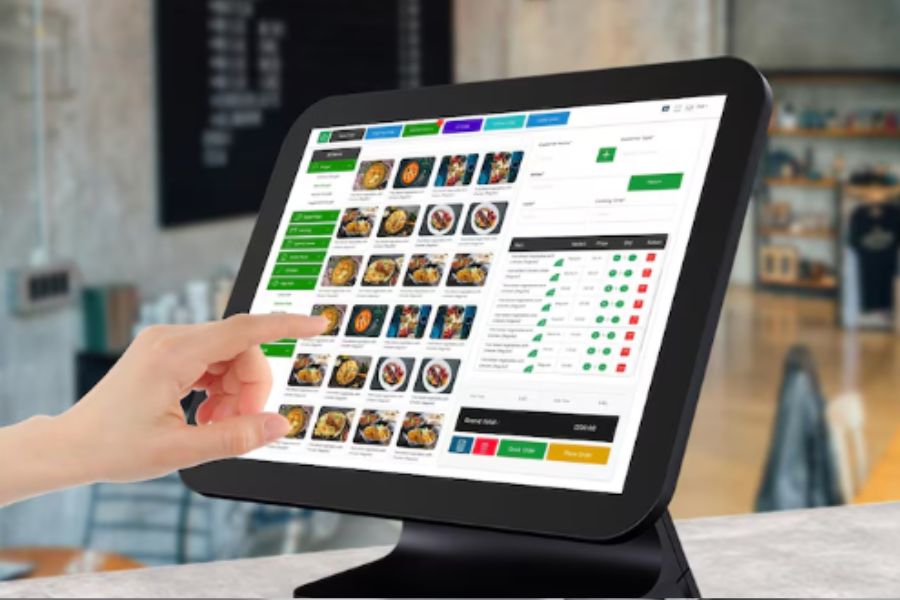Smartphones have changed how we shop, communicate, and interact daily. Businesses no longer question if they should develop mobile apps. The focus is now on creating apps that shoppers actually want to use. Retailers must make sure their apps fit smoothly into the customer journey. And that’s where integrated consumer mobile applications come into play.
So, what makes these apps effective and how can retailers build ones that truly work? Let’s break it down.
Highlights:
- Consumer mobile apps play a key role in driving engagement, speeding up purchases, and building loyalty through personalized, on-the-go experiences.
- Brands like Nike, Amazon, and Sephora use these apps to connect online and offline touchpoints, deliver tailored content, and keep customers coming back.
What Are Consumer Mobile Applications?
Simply put, consumer mobile applications are smartphone apps built to meet the needs of shoppers. They’re used for buying products, viewing offers, making payments, and tracking orders. They can also send reminders about upcoming sales or alert users about loyalty rewards. Starbucks, for example, uses its app to let customers order coffee ahead and skip lines. Target uses theirs to show special deals that match your buying habits.
These apps’ meaning is no longer just about being helpful. They’ve become central to how brands build loyalty and encourage repeat business. But apps that stand alone, without connection to other retail systems, often frustrate customers. Integrated apps, however, keep users engaged by connecting smoothly with everything else the retailer does.
Why Integrated Consumer Mobile Applications are a Must in Retail
Apps are no longer an ‘optional add-on.’ Integrated mobile applications are now central to successful retail strategies. They pull together online and offline shopping, tie purchases to rewards, and deliver customized offers. But how exactly does an integrated approach help?
Improved Customer Experience
Customers expect shopping to be simple and personal. Integrated consumer mobile applications remove friction from the buying journey. Shoppers can start an order online and finish it in-store without hassle. They can easily check product availability, see real-time inventory, and find accurate store locations right from the app.
For example, IKEA’s mobile app lets customers check in-store stock before they head out, saving frustration and improving the overall experience.
Better Data Utilization
Data from standalone apps often goes unused. Integrated consumer mobile applications combine information from different touchpoints to build a clearer picture of customer behavior. This means retailers can make smarter business decisions. Knowing exactly what your customers want helps you stock products better, target promotions precisely, and predict shopping trends.
Sephora’s app uses customer data to recommend new beauty products, creating a shopping experience that feels personal and intuitive.
Increased Operational Efficiency
Integrated apps don’t just make things easier for shoppers. They make running a business smoother, too. Real-time inventory tracking means fewer stock errors. Connecting mobile payments to POS systems reduces checkout times.
When Walmart integrated its mobile app with its in-store systems, they cut down checkout times dramatically, increasing both customer satisfaction and sales turnover.
Having integrated consumer mobile applications streamlines day-to-day retail operations, freeing staff to focus on serving customers rather than solving technical issues.
How to Implement an Integrated Consumer Mobile Application Effectively?
Getting your app right means starting with a solid plan. It’s not enough to just build something and hope it works. Successful integrated consumer mobile applications require careful thought, planning, and the right strategy. Here’s how to get started.
Clear Understanding of Customer Needs
Start by figuring out exactly what your customers want. Don’t guess. Ask them directly. Run surveys, hold focus groups, or look closely at what shoppers say online.
When Domino’s Pizza developed its mobile ordering app, they asked customers directly about their biggest frustrations. Turns out, waiting on hold was the issue. Domino’s addressed this with easy, fast mobile ordering, and customers loved it. Understanding customer problems clearly from the start makes your app instantly valuable.
Select the Right Technology and Tools
Next, pick tools that fit your retail needs. An app isn’t useful if it doesn’t smoothly connect with your other systems. Consider solutions like cloud platforms that easily sync sales, inventory, and payments. Look for technology providers with strong records in retail.
For example, ConnectPOS integrates neatly with popular eCommerce platforms like Shopify POS and BigCommerce POS, providing a strong foundation for your mobile app.
Ensure Smooth Backend Integration
A great frontend (what customers see) is useless without a solid backend (how the app works behind the scenes). Integrated apps need reliable, real-time connections to inventory, payments, and loyalty programs. Problems with backend integration lead to annoyed customers and lost sales.
Zara’s successful mobile app immediately updates when stock changes in-store or online. Customers always see accurate inventory and get a smooth buying experience.
Prioritize User Experience
Apps must be simple and easy to use, period. Even the best-integrated systems won’t matter if your app frustrates users. Test everything from signup processes to checkout speed.
Apps that are easy to use keep customers coming back. Amazon’s one-click checkout is a classic example. Customers complete purchases without frustration, leading to higher sales and happier shoppers.
Ways Retailers Are Already Using Mobile Technology to Win Over Customers
Retailers aren’t waiting around. They’re already using integrated mobile technology to pull ahead of competitors. Let’s look at some popular ways stores are making mobile apps central to their success.
Branded Retailer Apps
Many stores now use branded mobile apps to improve customer connections and boost loyalty.
Apps from brands like Nike or Starbucks don’t just simplify buying. They also give shoppers reasons to engage repeatedly. Nike’s app recommends products based on past purchases and fitness interests, creating a highly personalized experience that keeps users coming back.
Push-Based Notifications
Today’s apps don’t just sit around waiting for customers. Push-based notifications proactively send timely updates or special offers.
For instance, if a customer leaves an item in their cart, apps can send reminders or incentives to complete the purchase. Fashion retailer H&M uses notifications to announce flash sales and new arrivals, driving shoppers directly into stores or online.
Beacons and In-Store Messaging
Retailers also use mobile apps to improve the in-store experience. Bluetooth-enabled beacons send targeted offers directly to a shopper’s phone while they’re inside the store.
Macy’s has had great success with beacons. When shoppers enter, the app alerts them to special deals nearby, leading to more purchases and better customer satisfaction.
Mobile Payments
Accepting mobile payments like Apple Pay or Google Wallet simplifies checkout and speeds up shopping. Integrating these options with your POS system doesn’t just make checkout faster. It also ties payments to loyalty programs, making customers even more likely to return.
Stores like Whole Foods adopted mobile payments early, speeding checkout and pleasing shoppers who hate long lines.
Integrated mobile payment solutions also lay a strong foundation for future growth. They help unify online and offline sales, making your retail operations smoother and more profitable.
Enhance Retail Success with ConnectPOS’s Integrated Mobile POS Solution
Retailers worldwide depend on ConnectPOS to bring together their online and offline operations. ConnectPOS offers a reliable, easy-to-use omnichannel POS solution, perfectly designed to integrate with your consumer mobile applications. This integration creates a smoother customer experience and streamlines your daily retail tasks.
Here’s how ConnectPOS helps your retail business succeed:
- Unified Omnichannel Operations: Manage sales, inventory, and customer information across all channels from a single place. Whether shoppers buy online, in-store, or through an app, all data stays neatly organized and easily accessible.
- Real-time Inventory Sync: Keep your inventory accurate everywhere, at all times. Real-time updates mean you avoid the frustration of stockouts and keep your customers informed and satisfied.
- Flexible Payment Solutions: ConnectPOS accepts many payment methods, including Apple Pay and Google Wallet. Shoppers get quick, frictionless checkouts, while you gain a solid foundation for linking payments with your loyalty programs.
- Advanced Customer Insights: Powerful analytics from ConnectPOS provide detailed insights into shopper behavior. Use this information to personalize offers, target promotions, and improve customer loyalty.
- Comprehensive Integration Capabilities: Connect smoothly with top eCommerce platforms like Shopify, Magento, and BigCommerce. Effortless integration means you can set up quickly and scale your operations without technical headaches.
- Mobile-friendly Interface: The intuitive, mobile-ready design makes transactions quick and easy from any device. Staff can process sales fast, boosting productivity, and giving shoppers a better buying experience.
With ConnectPOS, your business can fully integrate consumer mobile applications into daily operations. Shoppers enjoy personalized, convenient experiences, and your team benefits from simplified management.
FAQs: Consumer Mobile Applications
1. What are the benefits of integrating mobile apps with retail operations?
Integrated mobile apps make shopping easier, faster, and more personal. Retailers enjoy smoother operations, accurate inventory management, and deeper customer insights. This means happier customers and increased sales.
2. How do integrated consumer mobile apps improve customer retention?
Integrated apps personalize shopping and reward loyalty. Customers get targeted offers, quicker checkouts, and seamless experiences between online and in-store visits. This encourages repeat visits and builds long-term loyalty.
3. What challenges might businesses face when integrating mobile applications?
Businesses might face technical challenges, like syncing inventory in real-time or ensuring app compatibility across systems. Choosing experienced tech partners, like ConnectPOS, can help you avoid these pitfalls and achieve smoother integration.
Final Thoughts
Integrated consumer mobile applications are no longer a ‘nice-to-have’. They’re necessary for retail success. Shoppers expect smooth, personalized, and convenient interactions at every step of their journey. Retailers who meet these expectations not only win customers but also set themselves apart from competitors.
ConnectPOS gives retailers the tools they need to unify their retail environment, connect with customers, and build lasting loyalty.
Ready to transform your retail business with ConnectPOS? Contact us today to get started.



